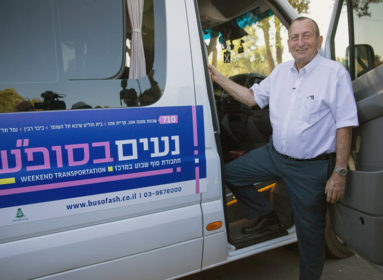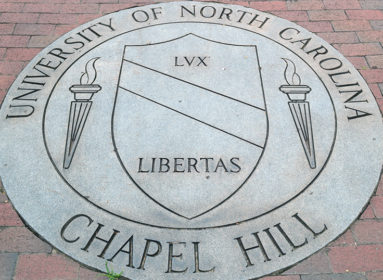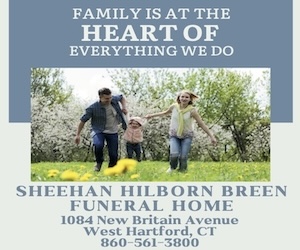
Jewish Ledger | December 17, 2010
The end of the year always seems to put people in a giving mood (especially those with an eye on their upcoming tax return). This year, despite the still overcast economic skies, there does appear to be some good news for charities. According to a report in the November issue of Philanthropy Journal, a recent survey says most Americans plan to give as much or more to charity in the final three months of the year, compared to the same period in previous years.
What’s more, even though 30 percent are giving less as a result of the economic times, 88 percent of those giving less saying they still make it a priority to give. Of course, tzedakah has always played a significant role in Jewish life. And so, as the year comes to an end, Ledger writers Cindy Mindell and Stacey Dresner highlighted a few of the myriad organizations that we believe are worthy of your charitable dollars.
HaMifal – Educational Children’s Homes

HaMifal - Educational Children's Homes
HaMifal – Educational Children’s Homes was established in 1943 in Jerusalem, by the late Recha Frier, founder of the Youth Aliyah movement and winner of The Israel Prize in 1980.
Now with facilities throughout Israel, HaMifal cares for children removed from their homes by court order, due to abuse or neglect. These facilities house, educate, and care for 960 children and youth at risk, providing them an opportunity to become independent and useful members of society.
Resident children are both Israeli-born and new immigrants from the former Soviet Union, Ethiopia, and South America, ages 5 to 18.
The network includes nine secular and religious children’s homes and villages, six family group homes, three after-school daycare centers, and one home for homeless soldiers.
UJA/Federation Westport Weston Wilton Norwalk has established a relationship with the HaMifal Children’s Village in Afula ‘Illit, sister region to the Southern New England Consortium of Jewish Federations in Connecticut and central Massachusetts (SNEC). This is the organization’s largest religious children’s home, and houses 92 children in eight family units.
Each family cares for up to 12 children through their high-school graduation, when the children enter the Israeli military. The foster parents tend to the children’s day-to-day needs, often assisted by a post high-school, pre-army volunteer who helps with homework, child care, and extra-curricular activities. The campus includes a communal library, a synagogue, a kitchen-dining hall, and several play areas. A therapeutic staff of supervisors, therapists, and counselors, and an educational staff, live on site.
HaMifal does not intend to replace the child’s family of origin or home community. While living in the village, the children continue to attend their regular schools and return home on Shabbat and holidays, and during summer vacation.
For more information: www.hamifal.org.il/eng/

Yemin Orde
Yemin Orde Youth Village
Yemin Orde was founded in 1953 by the British Friends of Youth Aliyah, to accommodate Holocaust orphans and children during post-World War Two immigration to Israel.
The village, named for British Major General Orde Charles Wingate, is now home to more than 500 children from Israel and 16 countries around the world, and to orphans from the Former Soviet Union.
The village is located near the artists’ village of Ein Hod on Mount Carmel. During the recent forest fire, 40 percent of the village was destroyed, including student and staff housing, the village convenience store, the library, a workshop, and the dining-hall roof. The Torah scrolls and computer-system servers were saved in time, says Brett Goldberg, a board member of the U.S.-based Friends of Yemin Orde.
The children were relocated temporarily to Neve Amiel, another youth village in the north, and are currently being housed in a military installation in Hadera. This week, they were able to return to the village school.
It takes $3 million to $4 million a year to house, educated, clothe and feed the 500 village children, Goldberg says. Friends of Yemin Orde fills in the funding shortfall between the expenses covered by the Israeli government and what it actually costs to meet the children’s needs.
Most of the funds raised by Friends of Yemin Orde go into the general operating budget, Goldberg says. UJA Federation of Greenwich helped fund a tractor for the village’s agricultural program. Before the fire, the Friends had begun fundraising for educational courses in advanced agricultural methods. UJA Federation of Greenwich is coordinating a teen mission to Israel in February, which includes a visit to Yemin Orde. While there, the group will present a check to the administration, and celebrate the bat mitzvah of a Greenwich teen.
“We want the village to get back on its feet, which is why we’ve launched the emergency fund,” says Karen Sallerson, executive director of Friends of Yemin Orde. “Our immediate goal is to get prefab housing at the village because we want our community back together as soon as possible.”
For more information: www.yeminorde.org
The Blue Card
Founded in 1934 in Germany to help Jews fleeing Nazi oppression, The Blue Card works to get much-needed funds to indigent needy Holocaust survivors, either on an emergency basis or as an ongoing stipend. To date, The Blue Card has provided more than $18 million to thousands of survivors and their families.
“What’s painful to me is that The Blue Card isn’t well known,” says Rabbi Adam Haston of Chabad of Orange/Woodbridge. Haston ran the New York City Marathon in November in order to raise money for the organization, bringing in more than $12,000. “I wanted to help because it’s just a matter of justice, the right thing to do,” he says. “People should not have gone through the horrors they went through to survive and have more pain and suffering.”
Holocaust survivors, often with no surviving family, are referred to The Blue Card by social-service agencies or government agencies in the communities where they live. A social worker assesses the survivor’s finances to establish need and, when appropriate, helps access any public entitlements for which they may be eligible. The Blue Card reviews each referral and determines the appropriate amount of financial aid for the individual or couple using the federal poverty level as a guide, with extenuating circumstances taken into consideration. The average income for a single Blue Card grantee is less than $12,000 per year.
The Blue Card is the only agency that provides continuing, ongoing support for medical care, rent subsidies, food, and other basic needs to indigent Holocaust survivors. The organization offers with emergency cash assistance, a monthly stipend, Jewish holiday funds, a free telephone medical emergency response system, and a summer vacation program. Once The Blue Card determines that a Holocaust survivor is qualified to receive financial assistance, there is no cap or time limit on the help he or she can receive.
For more information: www.bluecardfund.org








 Southern New England Jewish Ledger
Southern New England Jewish Ledger










